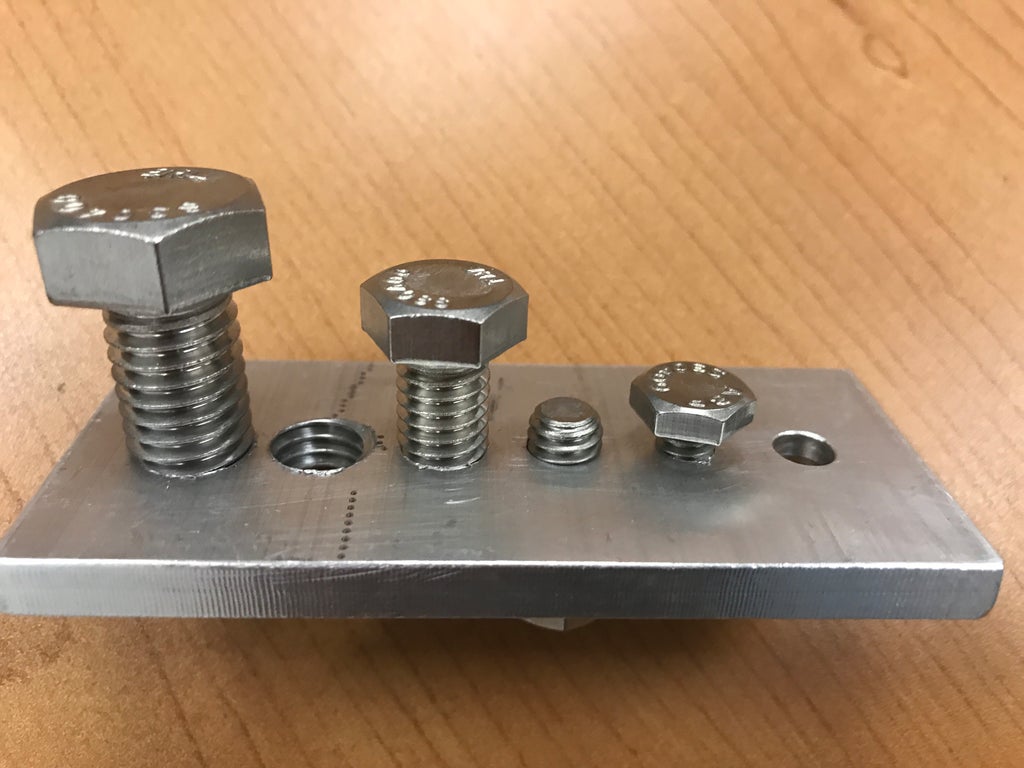In the realm of manufacturing and engineering, precision and accuracy are paramount. One crucial aspect that ensures the seamless assembly and functioning of parts is the creation of tapped holes. A tapped hole is a hole that has been threaded to accept a screw or bolt, allowing for secure fastening and integration of components. Tapped holes play a vital role in the manufacturing process, enabling the assembly of complex systems and structures.
The Importance of Tapped Holes in Manufacturing
Tapped holes are essential in ensuring that parts remain in place, even under stress or vibration. This is particularly critical in industries such as aerospace, automotive, and construction, where the reliability and durability of components are essential. Moreover, tapped holes facilitate the use of standardized fasteners, making it easier to replace or upgrade components over time. The use of tapped holes also enables the creation of complex systems and structures, allowing for the integration of multiple components.
Types of Tapped Holes
Tapped holes can be classified into different types based on their characteristics and applications. A through-hole is a hole that passes completely through a part, allowing for the insertion of a screw or bolt from one side. A blind hole, on the other hand, does not pass completely through a part, requiring the screw or bolt to be inserted from the same side. Counterbored holes have a larger diameter at the surface, allowing for the head of a screw or bolt to sit flush with the surrounding material. Countersunk holes have a conical shape, designed to accept a screw or bolt with a countersunk head.
Creating Tapped Holes
The process of creating tapped holes involves drilling and tapping. Drilling involves using a drill bit to create a pilot hole, which is then enlarged to the desired diameter using a tapping tool. Tapping involves cutting threads into the hole using a tap, a specialized tool designed for this purpose. The tapping process requires careful consideration of several factors, including the type of material being used, the size and location of the hole, and the type and pitch of the threads.
Material Selection and Tapped Holes
The type of material being used can affect the tapping process, with some materials being more prone to thread damage or breakage. For instance, materials with low ductility may require specialized tapping tools to avoid thread breakage. Similarly, materials with high hardness may require the use of carbide or high-speed steel taps to ensure accurate threading.
Hole Size and Location
The size and location of the hole can impact the structural integrity of the part, as well as the ease of assembly. Holes that are too close to the edge of a part may compromise its structural integrity, while holes that are too small may make it difficult to insert the screw or bolt. The location of the hole must also be carefully considered to ensure that it is accessible and does not interfere with other components.
Thread Type and Pitch
The type and pitch of the threads can affect the strength and durability of the fastening system. Coarse threads may provide better resistance to vibration and stress, while fine threads may provide better resistance to corrosion. The pitch of the threads must also be carefully considered to ensure that it matches the pitch of the screw or bolt.
Tapping Techniques
Tapping techniques can vary depending on the type of material being used and the desired level of precision. Hand tapping is a manual process that uses a hand-held tap and die set, while machine tapping uses a machine, such as a drill press or CNC machine. Thread forming is a process that uses a specialized tool to form threads without cutting.

Challenges and Considerations
Creating tapped holes can be a complex process, requiring careful consideration of several factors. These include the type of material being used, the size and location of the hole, and the type and pitch of the threads. Additionally, tapping can be a time-consuming process, particularly for large or complex parts.
Conclusion
Tapped holes are a critical component of modern manufacturing and engineering, enabling the creation of complex systems and structures. By understanding the different types of tapped holes, the processes involved in creating them, and the challenges and considerations that arise, manufacturers and engineers can ensure the production of high-quality parts and components. The creation of tapped holes requires careful consideration of several factors, including material selection, hole size and location, and thread type and pitch. By selecting the correct tools and materials, the creation of tapped holes can be a precise and efficient process, ultimately leading to the development of more reliable and durable products.







